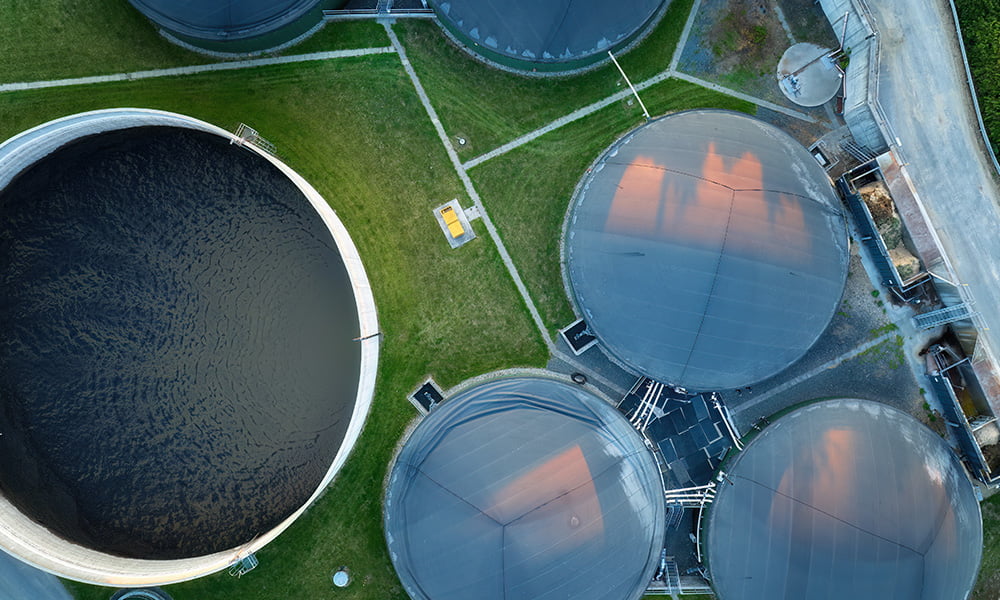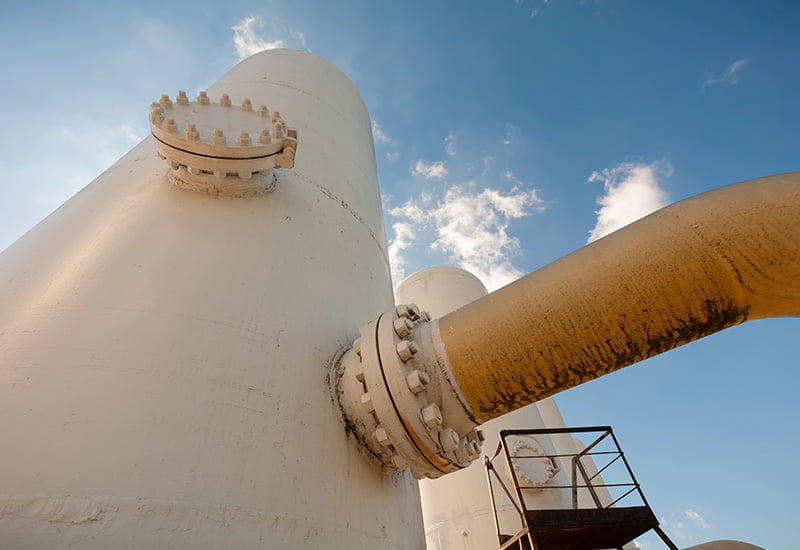Slurry Storage Benefits: Maximising Nutrient Management on Your Farm

While farm waste might not top everyone’s list of interesting conversation topics, slurry is a goldmine for farmers who want to make the most out of their yield.
But to make sure you can gain all the benefits from the waste you produce, you’ll need somewhere to store it. Beyond just meeting legal requirements, an efficient slurry storage system brings numerous advantages for your farm, such as boosting productivity, slashing fertiliser costs, and helping protect the environment all at once.
Curious about how to harness this often overlooked resource into a powerful tool for your farm? Read on to discover the incredible benefits of slurry storage.
Understanding slurry: what is it used for?
Slurry is a semi-liquid mixture primarily composed of livestock manure, water, and bedding materials such as straw or sawdust.
While it might not sound glamorous, this naturally produced concoction plays a crucial role in sustainable agriculture. Rich in nutrients, slurry is an invaluable resource for fertilising crops, enhancing soil health, and promoting plant growth to ensure you grow the cream of the crop, every single time.

4 key slurry storage benefits
1) Nutrient management
Efficient slurry storage is pivotal for optimal nutrient management on your farm. When slurry is properly stored, it retains its nutrient content which is essential for plant growth. This means healthier crops and bigger yields when it’s time to fertilise your fields.
2) Environmental protection
Slurry storage significantly reduces the risk of environmental contamination. By containing slurry in well-designed storage facilities, farms can prevent runoff into nearby water bodies, reducing nutrient pollution.
Additionally, proper storage minimises the release of ammonia and other harmful gases into the atmosphere, contributing to better air quality and reduced greenhouse gas emissions. Not only is this a best practice, but it’s also a legal requirement to ensure minimal environmental impact.
3) Economic efficiency
Effective slurry storage means you rely less on costly synthetic fertilisers, using your farm’s own natural resources instead. This boosts your bottom line with improved crop yields and long-term savings, making that initial investment in storage infrastructure truly worthwhile.
4) Better crop yields
Nutrient-rich slurry helps give your crops the best start in life. Unlike synthetic fertilisers, slurry provides a steady release of nutrients, ensuring a consistent supply over time.
Also, the organic matter improves soil structure, boosts root development, and enhances water retention, leading to more resilient and productive crops. This holistic improvement in your soil health and crop production can only bring significant advantages in the long run.
Types of slurry stores
Clearly, slurry storage is essential, but how do you know which one is right for you and your farm? Take a look at what to consider:

Slurry tanks
Slurry tanks are sturdy, enclosed structures designed to store slurry safely. They are ideal for various farm sizes, offering controlled environments that minimise odour and nutrient loss.
Benefits
- Durability: Constructed from materials like concrete or galvanised steel, slurry tanks are built to last.
- Containment: The enclosed design prevents nutrient loss and reduces odour.
- Compliance: Meets stringent environmental regulations, reducing the risk of leaks and contamination.
Considerations
- Cost: Higher initial investment compared to other storage types.
- Maintenance: Requires regular inspection and maintenance to ensure long-term integrity.

Slurry pits and lagoons
Slurry pits and lagoons are large, open storage solutions that provide virtually unlimited capacity. They are particularly suited for large-scale operations with significant slurry production.
Benefits
- Capacity: Offers extensive storage so you don’t need to worry about emptying your pit frequently.
- Cost-effective: Pits and lagoons are cheap to build compared to a tank, so they’re a good starting solution for when you’re first getting started.
- Environmentally friendly: When lined with geomembrane slurry liners, they prevent contamination and comply with DEFRA regulations.
Considerations
- Space: Requires a substantial amount of land to be a worthwhile investment.
- Safety: Open design necessitates safety measures to prevent accidents and limit bad smells – such as a slurry storage cover.
By selecting the right slurry storage solution – whether it’s a durable slurry storage tank or a cost-effective pit or lagoon – you can improve nutrient management and overall farm efficiency. For more information on choosing the right solution, check out our complete guide to slurry storage.
Implementing a farm nutrient management plan
Making the most out of your slurry isn’t just about having the best slurry storage system. It’s about making sure it fits in with your entire strategy. This goes from testing your soil, determining how many crops you want to produce, how quickly you apply the slurry and much, much more. Here’s a few tips for implementing your holistic farm nutrient management plan:
- Planning: Develop a comprehensive nutrient management plan by assessing soil tests, crop needs, and existing nutrient sources, including slurry. Detailed nutrient application schedules, rates, and methods.
- Record keeping: Track slurry production, application rates, soil tests, and crop yields. This ensures accurate monitoring and adjustment of your nutrient management practices.
- Integration with slurry storage: Utilise slurry tanks, pits, or lagoons to store slurry effectively, aligning nutrient application with crop needs. Proper storage maximises nutrient retention.
Start storing your slurry effectively today
Several slurry storage grants are available to support farmers in implementing and upgrading slurry storage facilities. This includes the Slurry Infrastructure Grant, which will help provide funding for you to expand or improve your existing storage systems, or help improve, replace or build additional storage facilities. Check your eligibility here.
FAQs
How much slurry storage do I need?
The amount of storage required depends on your livestock numbers, rainfall levels, land availability, and the closed periods in your region. As a general rule, farms should aim for at least 4 month’s worth of slurry storage to remain compliant and flexible with application timing.
What’s the best type of slurry storage for my farm?
This depends on factors like your farm size, available space, budget, and environmental regulations.
Common options include:
- Steel or concrete tanks (sealed and long-lasting)
- Earth-banked lagoons (cost-effective for large volumes)
- Stores with floating or fixed covers (to reduce ammonia loss and odour)
AWSM Farming can advise on the most suitable system for your specific needs.
Do I need to cover my slurry store?
While not always mandatory, covered storage is highly recommended.
Covers:
- Reduce ammonia emissions by up to 80%
- Prevent rainwater from diluting your slurry
- Help retain more nutrients for crop uptake
- Reduce odour problems for neighbours
Is slurry storage grant funding available?
Yes. The Slurry Infrastructure Grant is available to help cover the cost of building or upgrading slurry storage. This includes tanks, lagoons, covers, and associated equipment. AWSM Farming can support you through the grant application process and help you meet the eligibility criteria.
Can I spread slurry year-round if I have storage?
No. Even with adequate storage, you must follow closed period regulations and Cross Compliance rules. These vary by region and soil type but generally restrict spreading during autumn and winter to prevent runoff and water pollution. Read our blog to find out the best time to spread slurry.
How often should I empty and clean a slurry store?
It depends on the size and design. Lagoons are usually emptied annually, while tanks may need more frequent attention. Regular maintenance ensures you maintain full capacity, avoid blockages, and preserve the integrity of your system.
Ready to upgrade your infrastructure and make the most out of your nutrients?
Speak to our team at AWSM Farming today.
Get in touch




